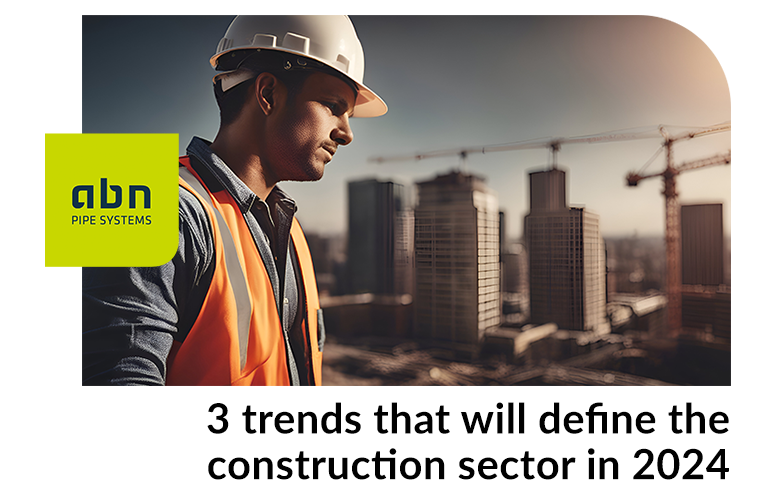In 2023, the construction industry faced a number of challenges, including supply chain disruptions, rising material costs and labour shortages. However, the resilient and innovative spirit of construction professionals prevails in 2024.
This sector is in the process of incorporating innovative technologies and is continuing on its path towards more sustainable practices, which will significantly change the way we do construction.
Below, we will explore the most important trends that will shape the future of the construction sector.
- Technological innovations in construction
- Humanisation of construction
- Sustainability and energy efficiency
Technological innovations in construction
The construction sector is undergoing a revolution thanks to technologies such as Augmented Reality and the use of drones, improving efficiency in the planning, execution and maintenance of projects.
A close-up view with Augmented Reality and the use of drones
The incorporation of Augmented Reality provides a detailed view of projects helping to improve efficiency in both construction and maintenance. The use of drones is also revolutionising the way in which construction analysis and inspections are carried out, improving safety and efficiency in the construction process.
Combined with real-time communication, these tools facilitate collaboration between office operators and the field, making decision-making easier.
Efficiency in data handling with Artificial Intelligence
The integration of artificial intelligence (AI) and data is leading the revolution in the construction industry.
Using AI for data collection, companies can achieve greater project efficiency by conducting real-time performance analysis, driving task automation and promoting sustainable development in construction.
In addition, this approach paves the way for the creation of shared data environments through connected data platforms. These allow for greater efficiency, agile problem solving and informed decision making.
BIM: The standard in construction planning and execution
BIM (Building Information Modelling) has established as an essential methodology for planning and executing architectural projects. This standard has the capability to provide detailed 3D modelling and simulate variables that affect the structure.
Additionally, its role in managing data throughout the project lifecycle, from planning to maintenance, makes it an essential component for the industry.
Humanisation of construction
Building the future is not just about erecting impressive structures, but about creating environments that truly improve people’s quality of life. In this context, the humanisation of construction emerges as a powerful trend that places people and their well-being at the epicentre of architectural design and urban planning.
Block construction, modular construction
Modular or prefabricated construction involves the foundation of building sections away from the construction site, in controlled environments, and then transporting and installing them at the final site.
It is characterised by its speed of production, the standardisation of the process and the absence of climate impact, which makes this type of building ideal for large-scale projects such as hotels, hospitals and residences.
Natural building through biophilic design
Biophilic design seeks to connect nature with physical and mental well-being through the incorporation of vegetation in buildings, which helps to reduce the effects of climate change, as well as contributing to thermal and acoustic insulation.
Examples such as designing for natural daylight or vegetation-covered facades, together with the creation of outdoor spaces, promote comfort and help reduce stress.
Sostenibilidad y eficiencia energética
Environmental awareness remains a priority in 2024. The use of sustainable materials, energy efficient design and the integration of green technologies remain essential when designing new building projects.
Preserving heritage
Building renovation has become an art that fuses history with modernity. Instead of demolishing old structures, architects and designers are adopting a respectful approach to architectural heritage. Restoring facades, preserving historic elements and adapting spaces to meet contemporary standards are common practices that bring the past to life in a sustainable way.
Energy Efficiency and Saving
2024 has opened the door to a revolution in the way we think about energy efficiency, with Passive Houses leading the way. These houses, especially prominent in Northern Europe, are concrete examples of how construction can be environmentally friendly and economically efficient.
With no reliance on external sources for heating or cooling, these houses take advantage of the local climate and geographic location to achieve significant savings in energy costs.
Coming soon to the construction sector
This tour through the trends of 2024 reveals a transformation in the way we conceive and build our spaces.
At the intersection of tradition and the avant-garde, the construction of the future is woven with threads of sustainability, technology and a connection to human needs. We are faced with a constant commitment to adaptation and information, on a horizon where construction is not only technical, but at the service of humans.
